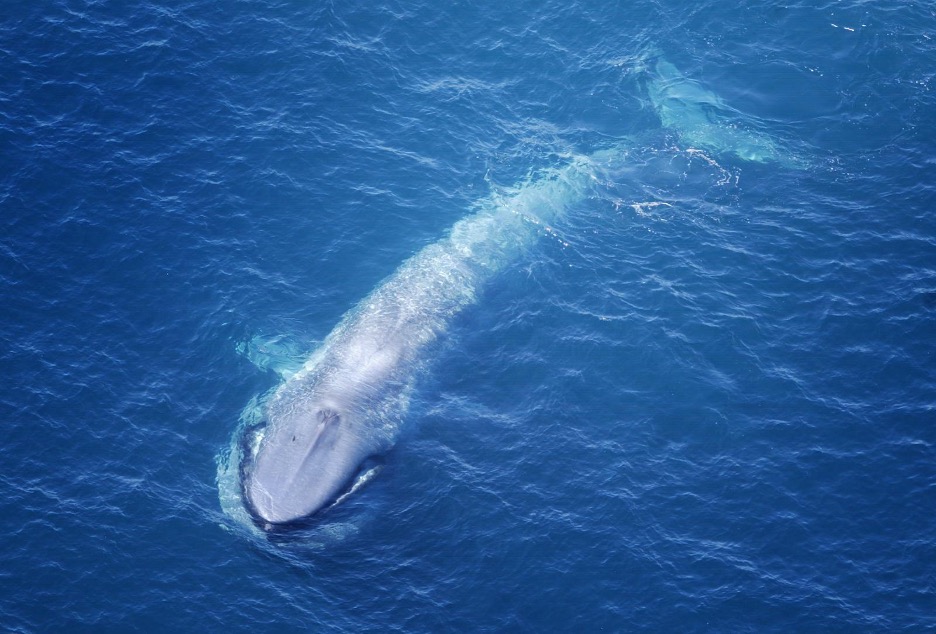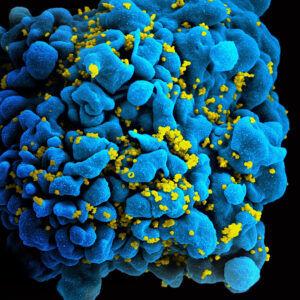
Figure 1: Blue Whale Surfacing off the Coast of Oregon
Source: Wikimedia Commons
Both toothed and baleen whales are some of the largest animals to ever exist – Orcinus orca, or the killer whale, clocks in around 11 feet. Its larger and deeper-dwelling toothed cousin, the sperm whale measures up to a massive 20 meters (about 66 feet). However, both these creatures are dwarfed by the largest whale – and in fact the largest animal to ever exist – the blue whale which has been known to grow up to 30 meters (98 feet) and weighing in at a massive 190 tons. These creatures have clearly evolved to grow to epic proportions – but why?
Whales have existed on Earth for approx. 50 million years. Their earliest ancestors resembled something more akin to a large dog. Pakicetus, one of the first whales, was primarily a land animal and grew to the size of a small dog, about 1 meter. The first whale that lived significantly in water was Ambulocetus, about 42 mya. Stratigraphic analysis and examination of oxygen isotopes in the bones of Ambulocetus suggest it drank both saltwater and freshwater making it likely it was a bay-dwelling animal1. Whales after Ambulocetus show higher and higher levels of saltwater oxygen isotopes and their skeletons reflected a more marine lifestyle, with the forelimbs becoming more streamlined and better able to help guide the cetacean while the hindlimbs became essentially nonexistent – these vestigial ankle bones, an homage to their land-dwelling origins, are still present in whales today1.
Baleen whales emerged as early as 36 mya, after the Basilosaurads, another early whale family, split into two groups of whales, what we know today as Baleanoptera, the baleen whales, and Odonticeti, the toothed whales. The emergence of the baleen whales occurred around the same time as an intensification process known as oceanic upwelling2. This process occurs when strong surface winds running parallel to the shore push surface waters away from the shore. This allows cold, nutrient-dense waters from the deep ocean to well up, stimulating plankton blooms. These stronger upwellings allowed plankton and krill to become concentrated along the coastline. This is believed to have allowed the baleen whales to forage efficiency, letting them become larger.
This enrichment of coastal waters may help explain why whales became so massive, especially in the last 5 million years. However, what limits a whale’s gigantic size isn’t well known. Could whales, in fact, become even bigger? Jeremy Goldbogen, a professor and ecologist at Stanford believes whale size has stabilized due to the efficient and finely-tuned feeding strategies of the largest whales.
Goldbogen hypothesized that the whale’s gigantism was due to their ability to gain more calories than they spend. This may seem obvious but collecting the data to demonstrate this claim from living, moving 150-ton creatures was no easy feat. Goldbogen and his team orchestrated a massive study involving collaborators from six countries. These teams attached tags with suction cups to whales, allowing the scientists to track their movement. These tags recorded hundreds of data points every second for about ten hours before detaching and floating to the surface for collection. These tags measured time feeding below the surface, depth they dove, and the time they remained at that depth. Researchers used these data points to measure the energy efficiency of these whales, a comparison of the calories gained from foraging versus the calories used to find and consume their food.
Data was collected from over 300 toothed and baleen whales representing 11 species from harbor porpoises (about 5 feet long) to the massive blue whale. Researchers analyzed about 50,000 feeding events, finding that gigantism largely depends on the animal’s specialized foraging mechanisms.
Goldbogen and his team found lunge-feeding baleen whales, or whales that consume large swarms of krill or forage fish in one fell swoop, are the most energy efficient of the whales. As these whales get larger, they use more energy lunging but their gulp size increases by a disproportionate amount. Thus, the larger baleen whales are, the greater their energy efficiency. The team supposes that the upper limit on whale size is due to the range, density, and seasonal presence of their prey.
However, this model of energy efficiency found with regard to baleen whales does not hold true for their toothed relatives. The largest toothed whales, such as sperm whales, feed on single, large prey such as the giant squid – however, the largest prey is generally the hardest to find and catch, and as such most toothed whales feed on medium-sized squid which are more abundant. Due to the availability of prey, toothed whales follow the opposite trend with respect to energy efficiency – as they get larger, they become less efficient. The larger toothed whales spend more energy pursuing and consuming the larger prey – researchers believe the lack of large prey imposes the upper limit on toothed whale size.
Though this research is helpful in answering some questions about whale evolution, many questions still remain. Whale gigantism is relatively recent, only occurring within the last 5 million years of whale’s 50-million-year evolutionary history – could whales become larger in the future? Further, there has been some research that suggests the largest whales, such as blue whales, operate at near-maximum heart rate even while doing routine foraging, suggesting a physiological limit to whale size3. Goldbogen’s research however sheds new light on why modern whales grow to such unprecedented size.
References
- The Evolution of Whales. Understanding Evolution. University of California, at Berkeley. https://evolution.berkeley.edu/evolibrary/article/evograms_03
- Goldbogen, J.A., et. al. (2019). Why Whales are big but not bigger: Physiological drivers and ecological limits in the age of ocean giants. Science, 6471 1367-72. https://doi.org/10.1126/science.aax9044
- Goldbogen, J.A., et al. (2019). Extreme bradycardia and tachycardia in the world’s largest animal. Proceedings of the National Academy of Sciences, 116 (50) 25329-32. https://doi.org/10.1073/pnas.1914273116
Related Posts
Hidden Cell-Based HIV Reservoirs Found via Sugar Signatures
Figure 1: SEM image of the human immunodeficiency virus (HIV)...
Read MoreAdvancements in Regenerative Medicine – Unleashing the Potential of Artificial Organs and Organs-on-a-Chip
Source: 허동은교수, Wikimedia Commons, CC BY-SA 4.0 Introduction Recent years...
Read MoreAre We Driving Our Dogs Sick Through Our Urban Lifestyles?
Figure 1: Allergic disorders in humans and dogs are associated...
Read MoreSean McOsker



